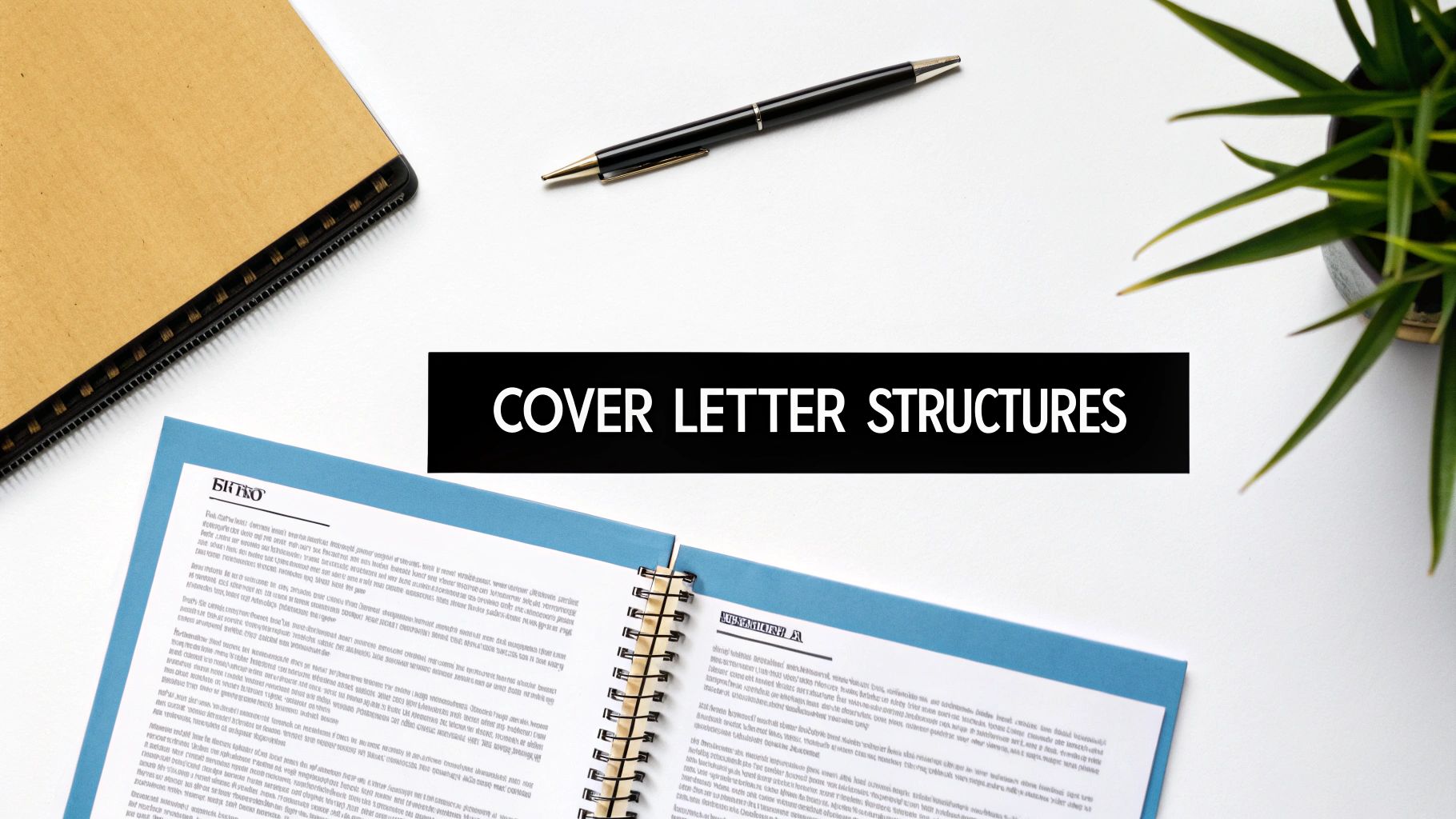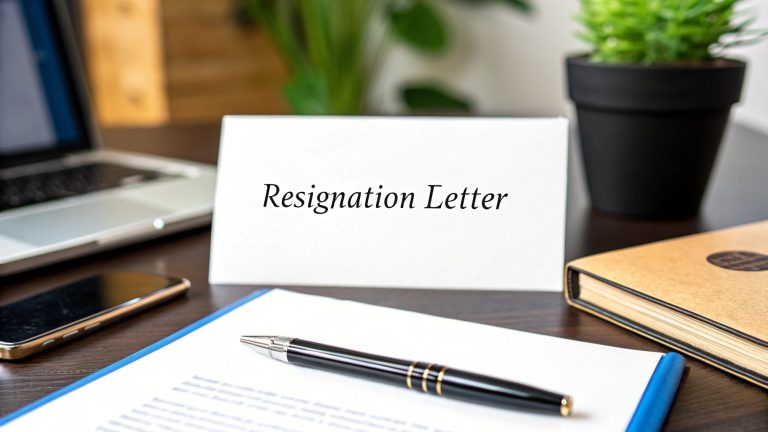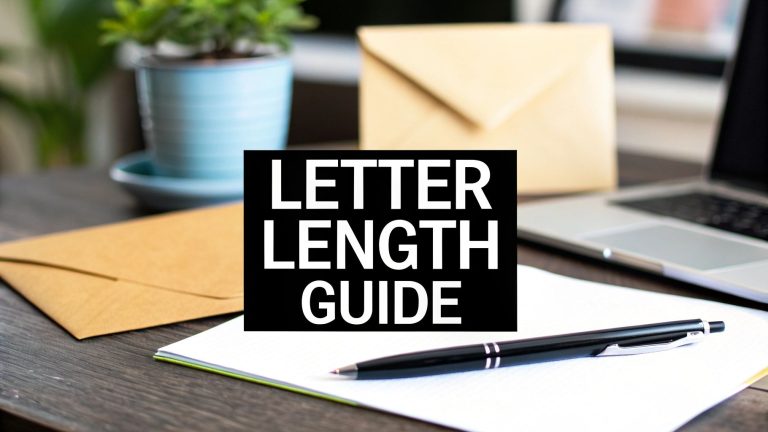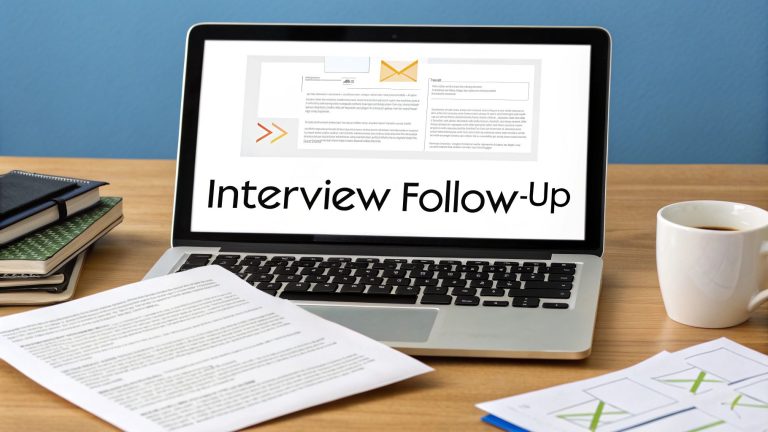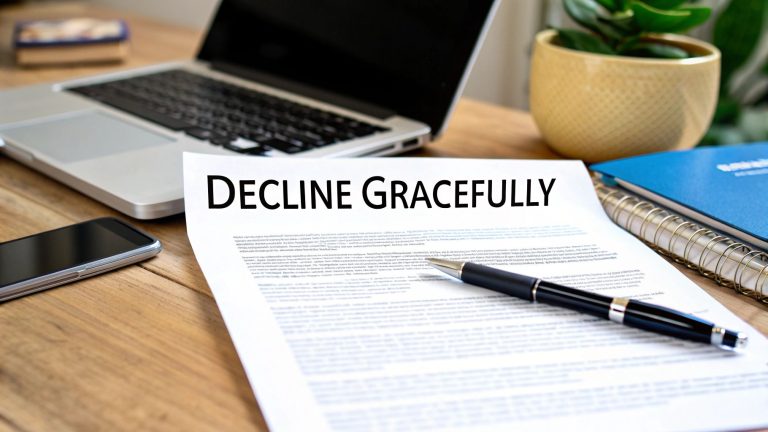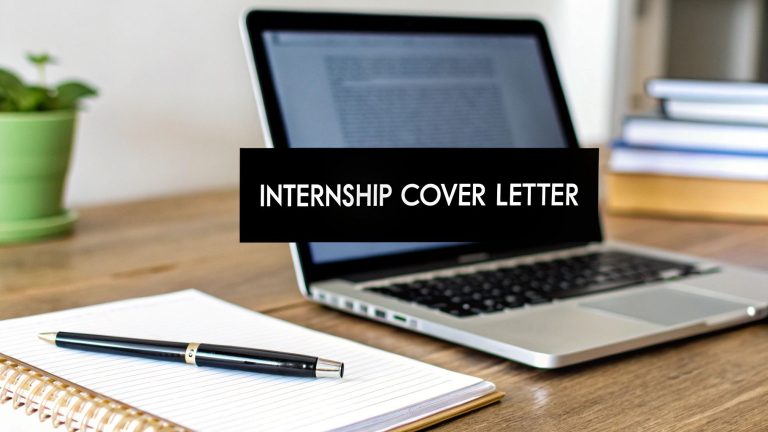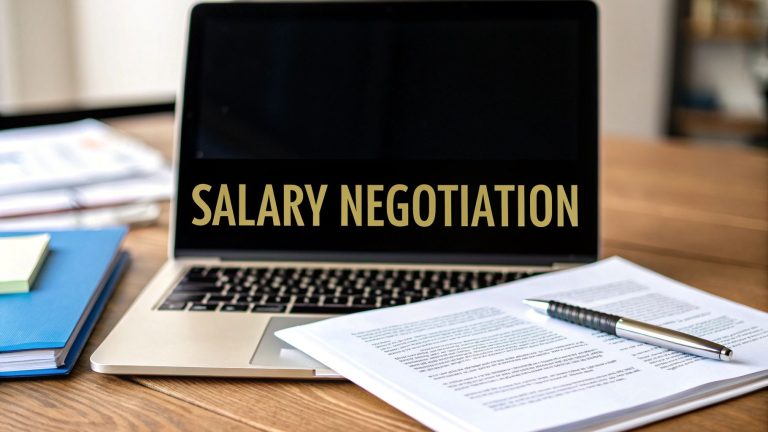Staring at a blank document trying to write a compelling cover letter can feel daunting. Many job seekers default to a generic, one-size-fits-all format, failing to realize that the structure of your cover letter is as crucial as the content itself. The right framework doesn't just organize your thoughts; it tells a strategic story, highlights your most relevant qualifications, and makes a memorable first impression on a busy hiring manager. An ill-fitting structure can obscure your best achievements, while a well-chosen one can make you the obvious choice for an interview.
In this guide, we will break down eight powerful cover letter structure examples, moving beyond basic templates. Think of it like a business proposal; your ability to distill key strengths into a persuasive argument is paramount. In fact, understanding how to write executive summaries that effectively capture critical information can directly inform your approach to crafting a concise and impactful cover letter.
For each example, we provide a detailed analysis, a real-world sample, strategic insights, and actionable takeaways to help you select and execute the perfect structure for any job application. Whether you're in a traditional industry, a creative field, or making a career change, mastering these formats will equip you to write a cover letter that not only gets read but gets results. Let's explore how to build a letter that opens doors.
1. The Traditional Three-Paragraph Structure
The Traditional Three-Paragraph Structure is the most classic and widely recognized of all cover letter structure examples. It’s a straightforward format that gets right to the point, making it a favorite for hiring managers in conservative industries like finance, law, and government. This structure follows a simple, logical progression: introduce yourself, sell your skills, and ask for the interview.
Its enduring popularity comes from its clarity and efficiency. A recruiter can quickly scan the letter and understand your intent, qualifications, and enthusiasm without navigating complex storytelling. This direct approach respects the reader's time while still allowing you to present a compelling case for your candidacy.
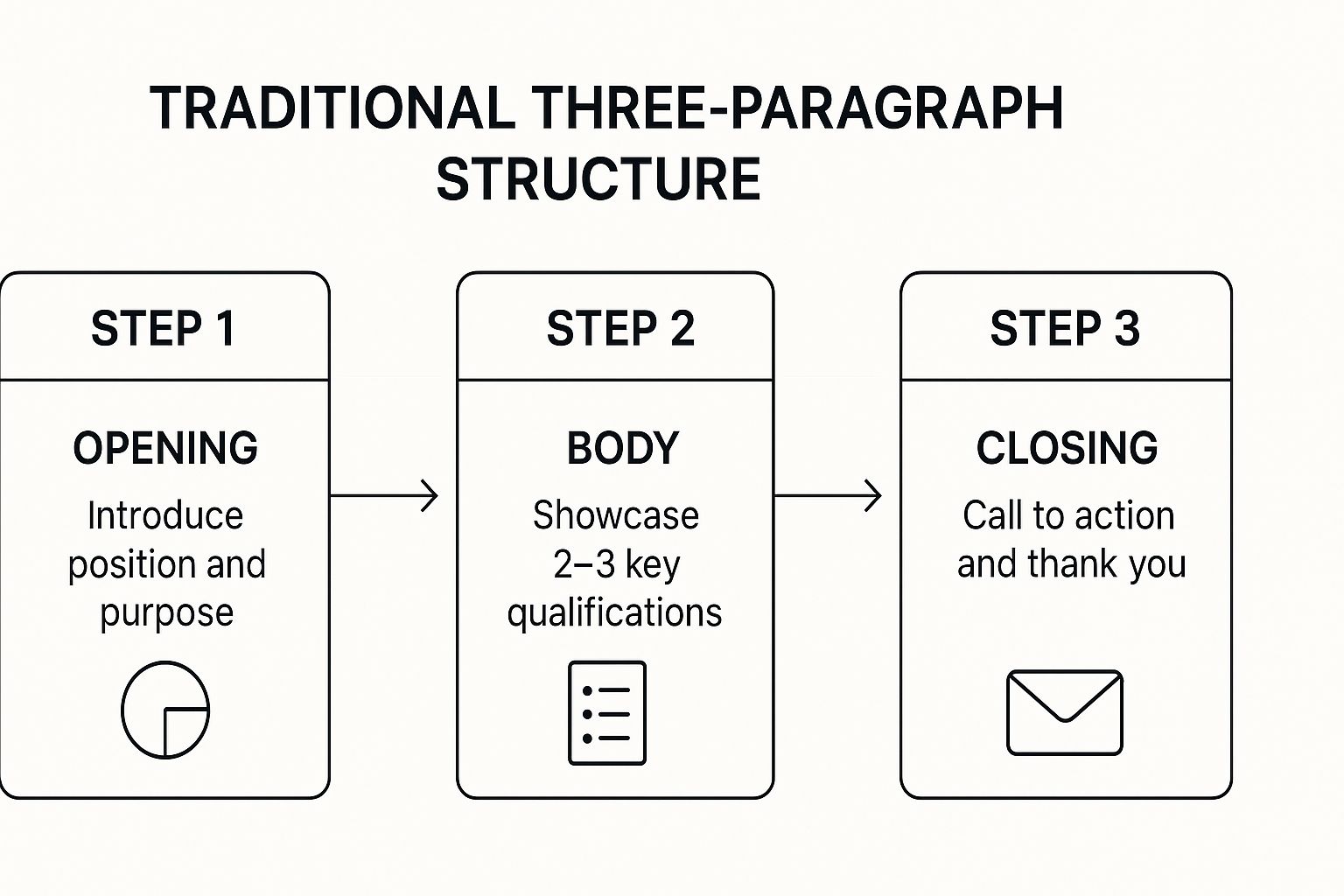
Strategic Breakdown
This format is built on a logical, three-act narrative that is easy to follow.
- Paragraph 1: The Introduction. State the position you're applying for and where you saw it advertised. Briefly express your excitement and introduce your core value proposition.
- Paragraph 2: The Body. This is your sales pitch. Connect your key skills and most relevant achievements directly to the job description’s requirements. Use specific, quantifiable results.
- Paragraph 3: The Closing. Reiterate your interest in the role and the company. Confidently state your desire for an interview and thank the hiring manager for their time and consideration.
Actionable Takeaways
- Be Direct: Don't waste time with fluffy introductions. State your purpose clearly in the first one or two sentences.
- Quantify Achievements: Instead of saying you "improved sales," say you "increased regional sales by 15% in six months." Numbers provide concrete evidence of your impact.
- Mirror Job Description Language: Use keywords and phrases from the job posting to show you are a perfect match and to pass through any applicant tracking systems (ATS).
This structure is a reliable foundation for any application. You can learn more about how to make a cover letter using this effective framework on our site. It’s an ideal choice when you need a professional, no-nonsense document that communicates your qualifications with precision and formality.
2. The T-Format Structure
The T-Format Structure is one of the most visually compelling cover letter structure examples for directly aligning your qualifications with an employer's needs. It uses a simple two-column table to create a "T" shape, allowing you to explicitly match job requirements with your specific skills and achievements. This format is incredibly effective for technical, project-based, or skills-heavy roles where meeting specific criteria is paramount.
Its power lies in its scannability. A hiring manager can see in seconds that you have not only read the job description carefully but also possess the exact qualifications they are looking for. This direct-mapping approach eliminates any guesswork and presents an undeniable case for your candidacy, making it a standout choice for roles in project management, IT, and engineering.
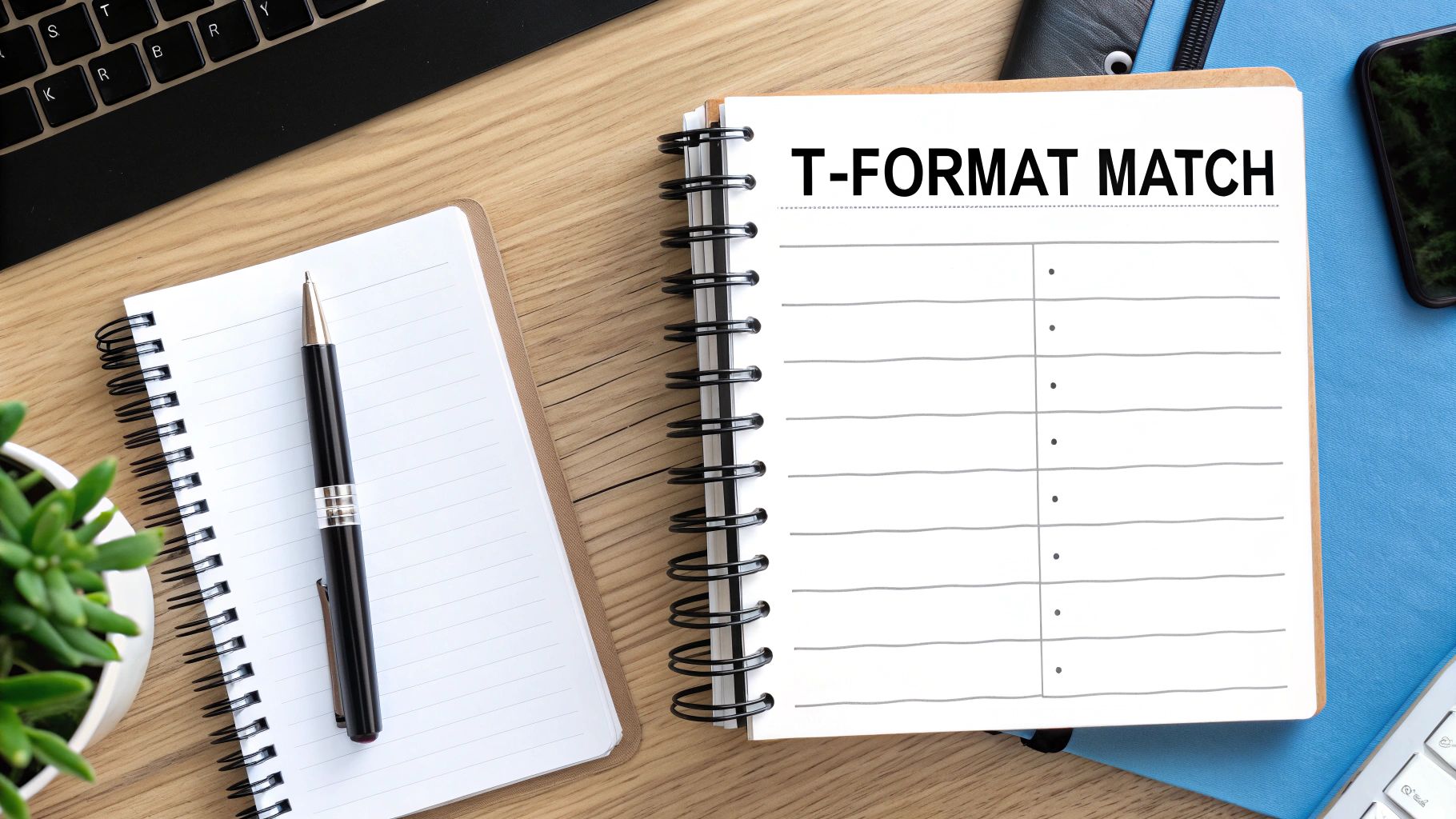
Strategic Breakdown
This format sandwiches a clear, evidence-based table between a brief introduction and conclusion.
- Paragraph 1: The Introduction. Start with a warm, personalized opening. State the role you're applying for and express your enthusiasm before introducing the two-column comparison.
- The T-Format Table. Create a two-column table. The left column, often titled "Your Requirements," lists 3-5 key qualifications from the job description. The right column, titled "My Qualifications," provides specific, evidence-backed examples of how you meet each requirement.
- Paragraph 3: The Closing. Conclude with a brief paragraph that summarizes your fit and reiterates your strong interest. Include a confident call to action for an interview and thank the reader for their consideration.
Actionable Takeaways
- Be Selective: Don't list every requirement. Focus on the top 3-5 most critical qualifications mentioned in the job posting to maximize impact.
- Use Concrete Evidence: In the right column, use quantifiable achievements, specific project examples, and certifications to prove your skills.
- Preserve Formatting: Always save and send your cover letter as a PDF. This ensures your table formatting remains intact across all devices and email clients.
This structure is perfect for career changers looking to highlight transferable skills or for any role with a clearly defined set of required competencies. It’s a bold, confident format that makes a strong, immediate impression on any recruiter.
3. The Storytelling/Narrative Structure
The Storytelling/Narrative Structure is one of the most engaging cover letter structure examples because it connects with the reader on a human level. Instead of a dry list of qualifications, it opens with a brief, compelling story that illustrates your passion, a key skill, or a personal connection to the company’s mission. This approach is highly effective for roles in creative fields, nonprofits, or startups where personality and culture fit are just as important as technical skills.
Its power lies in its ability to make you memorable. By weaving your achievements into a narrative, you create an emotional hook that helps you stand out from a stack of otherwise similar applications. It shows you’re not just a qualified candidate; you're a person with a story that aligns with the company's own.
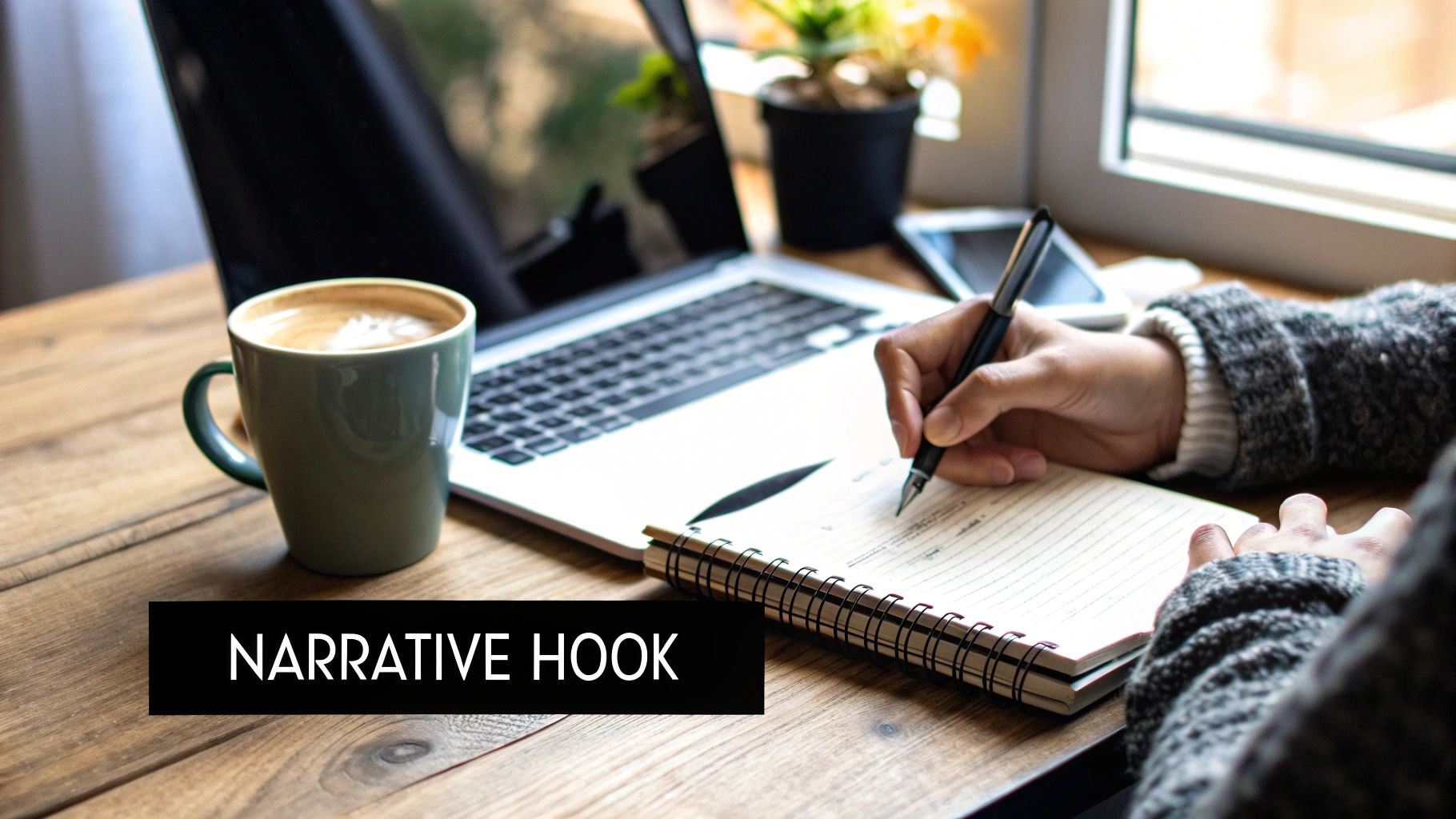
Strategic Breakdown
This format uses a narrative arc to frame your professional value and create an immediate connection.
- Paragraph 1: The Hook. Start with a short, relevant anecdote (3-5 sentences) that showcases a core value or skill. This could be a story about a challenge you overcame or a moment that solidified your passion for the industry.
- Paragraph 2: The Bridge. Smoothly transition from your story to the specific role. Connect the theme or outcome of your anecdote directly to the requirements listed in the job description, showing how your experience makes you the ideal candidate.
- Paragraph 3: The Closing. Conclude by reinforcing the connection between your personal story and the company's mission. Reiterate your enthusiasm and include a strong call to action, asking for an opportunity to discuss how your unique journey can benefit their team.
Actionable Takeaways
- Keep it Relevant: Your story must directly relate to the job or company. A story about organizing a community fundraiser is perfect for a nonprofit role but may not fit a data analyst position.
- Show, Don't Tell: Instead of saying you are "passionate," tell a story that demonstrates your passion in action. Use vivid details to make the narrative authentic and memorable.
- Research the Culture: This approach works best for companies that value personality and storytelling (e.g., Patagonia, Airbnb). For more traditional organizations, a classic structure might be safer.
The narrative structure turns your cover letter from a simple application into a compelling introduction. It’s the perfect choice when you need to convey personality and passion, ensuring your application resonates with the hiring manager long after they've finished reading.
4. The Problem-Solution Structure
The Problem-Solution Structure is a highly strategic approach among cover letter structure examples that positions you not just as a candidate, but as a proactive business partner. This format demonstrates deep company research and commercial acumen by identifying a specific challenge or opportunity the organization faces and presenting yourself as the direct solution. It immediately shifts the conversation from your qualifications to the value you can deliver.
This advanced structure is particularly effective for roles in sales, management consulting, marketing, and operations, where strategic thinking and problem-solving are paramount. By showing you understand the company’s pain points, you prove you are already invested in its success and ready to make an immediate impact.

Strategic Breakdown
This format frames your application around the company's needs, not just your own career goals.
- Paragraph 1: The Problem. Open by identifying a specific company goal, industry trend, or organizational challenge. Use data from news articles, press releases, or annual reports to show you’ve done your homework.
- Paragraph 2: The Solution. Connect your skills and past achievements directly to solving that problem. Explain how your experience in streamlining processes or boosting engagement metrics can address their specific need.
- Paragraph 3: The Impact. Conclude by quantifying the potential positive outcomes of implementing your solution. Propose a call to action to discuss how you can contribute to their goals in more detail.
Actionable Takeaways
- Frame Problems Diplomatically: Present challenges as opportunities for growth rather than criticizing current operations. For example, mention a chance to "further optimize a successful process."
- Use Public Data: Reference information from the company's quarterly reports or recent press releases to ground your analysis in facts, demonstrating thorough research.
- Focus on Relevant Issues: Ensure the problem you identify is directly related to the responsibilities of the role you are applying for. A marketing applicant should focus on brand visibility, not supply chain logistics.
This structure can be adapted even if you are just starting your career. Discover more about how to highlight your potential with our guide on crafting a cover letter with no experience. It’s a powerful choice for experienced professionals who want to prove their strategic value from the very first interaction.
5. The Bullet Point Structure
The Bullet Point Structure is a modern, scannable format designed for the fast-paced hiring world. It’s one of the most effective cover letter structure examples for capturing a busy recruiter’s attention immediately. This format uses a brief introduction followed by a series of impactful bullet points to highlight your most relevant achievements and qualifications.
Its strength lies in its visual clarity and directness. Instead of embedding accomplishments within paragraphs, this structure isolates them, making it easy for a hiring manager to see your value in a single glance. It's particularly well-suited for roles where quantifiable results are critical, such as in sales, project management, and tech.
Strategic Breakdown
This format prioritizes scannability and impact by presenting key qualifications in a highly digestible list.
- Paragraph 1: The Introduction. Open with a concise paragraph stating the role you're applying for and your enthusiasm for the opportunity. Briefly introduce yourself and transition into your key qualifications.
- Bulleted Section: The Highlights. This is the core of the letter. Present 3-5 bullet points that showcase your most impressive, quantifiable achievements. Each bullet should directly align with a primary requirement from the job description.
- Paragraph 2: The Closing. Conclude with a brief final paragraph that reiterates your interest and fit for the company's culture or mission. Include a clear call to action, expressing your eagerness to discuss your qualifications in an interview.
Actionable Takeaways
- Lead with Action Verbs: Start each bullet point with a powerful verb like "Orchestrated," "Increased," or "Implemented" to create immediate impact.
- Prioritize Quantifiable Results: Use numbers, percentages, and metrics to demonstrate the tangible value you bring. For example, "Reduced project overhead by 20% through strategic vendor negotiations."
- Align with Job Requirements: Scrutinize the job description and tailor each bullet point to address a specific need or responsibility mentioned by the employer.
This structure is ideal for candidates in data-driven or results-oriented fields who want to ensure their biggest wins are front and center. It respects the reader's time while powerfully demonstrating your ability to deliver concrete outcomes.
6. The AIDA Structure (Attention, Interest, Desire, Action)
The AIDA Structure is a powerful persuasive framework borrowed directly from the worlds of marketing and sales. As one of the most dynamic cover letter structure examples, it guides the reader through four distinct psychological stages: grabbing Attention, building Interest, creating Desire, and prompting Action. This formula is engineered to influence decision-making and is particularly effective for highly competitive sales, marketing, and client-facing roles.
Its strength lies in its ability to transform a standard application into a compelling sales pitch. Instead of just listing qualifications, you create a narrative that actively persuades the hiring manager that you are not just a good fit, but the only fit. This proactive approach helps your letter stand out in a crowded inbox by making an unforgettable first impression.
Strategic Breakdown
This format is built to systematically convert a reader's initial glance into genuine enthusiasm.
- Attention: Start with a powerful hook. This could be a major quantifiable achievement, a bold statement about how you can solve a company problem, or a direct mention of a mutual connection.
- Interest: Once you have their attention, build interest by aligning your background with the company's specific needs or challenges. Show you've done your research and understand their goals.
- Desire: Transition from interest to desire by showcasing your unique value proposition. Explain how your specific skills and experiences will directly benefit the company and help them achieve their objectives. Make them envision your success in the role.
- Action: End with a clear and confident call to action. Don't just ask for an interview; propose the next logical step, such as a brief call to discuss how you increased revenue by 20% in your last role.
Actionable Takeaways
- Lead with Your Best Stat: Open with a jaw-dropping, relevant number. For example, "My recent email campaign for XYZ Corp generated a 300% ROI, and I see a similar opportunity to drive growth in your new product line."
- Connect to Company Pain Points: Show you understand their challenges. Reference a recent company announcement, a market trend, or a goal mentioned in the job description, and explain how you can help.
- Create Uniqueness: Don't just list skills. Frame them as unique solutions. Instead of "skilled in SEO," try "I specialize in a unique SEO strategy that doubled organic traffic for my previous employer, a result I am confident I can replicate for you."
This structure is ideal for roles where performance and results are paramount. You can discover more about the art of professional letter writing and persuasion with our detailed guides. It's a top choice when you need to make a bold statement and prove your value from the very first sentence.
7. The Personal Connection Structure
The Personal Connection Structure is one of the more impactful cover letter structure examples because it opens with an authentic, human link to the company. This format prioritizes establishing a genuine relationship from the very first sentence, whether you're a long-time customer, were referred by a current employee, or deeply align with the company’s mission. It immediately differentiates you from other applicants by showcasing personal investment.
This approach is highly effective because it signals cultural fit and genuine enthusiasm. For hiring managers at mission-driven nonprofits, community-focused startups, or beloved consumer brands like Nike or Apple, seeing that a candidate has a real history with their organization can be a powerful tiebreaker. It frames your application not just as a job seeker looking for a role, but as a supporter who wants to contribute to a company they already admire.
Strategic Breakdown
This format inverts the standard opening to lead with rapport before presenting qualifications.
- Paragraph 1: The Connection. Open by immediately stating your personal connection. Be specific: mention the employee who referred you (with their permission), describe how their product has impacted you, or reference a company event you attended that sparked your interest.
- Paragraph 2: The Bridge to Professional Value. Seamlessly transition from your personal story to your professional qualifications. Connect the dots by explaining why that personal connection makes you a professionally suitable candidate for this specific role.
- Paragraph 3: The Closing. Reiterate your excitement, this time blending your personal passion with your professional capabilities. Include a standard call to action, confidently requesting an interview to discuss how you can contribute to their team.
Actionable Takeaways
- Be Authentic: Only use this structure if your connection is real and meaningful. Insincerity is easy to spot and can backfire.
- Connect Personal to Professional: Don't just state your connection; explain why it gives you unique insight or motivation that will benefit the company. For example, "As a daily user of your software, I have a deep understanding of the customer experience, which I can leverage to improve UI/UX design."
- Keep it Professional: While the opening is personal, maintain a professional tone throughout the rest of the letter. The goal is to show you are both an enthusiast and a qualified expert.
This structure helps you build an immediate bond with the reader. Learning how to blend personal stories with professional qualifications is a valuable skill, and you can explore more techniques for how to write a personal letter on our site. It’s the perfect choice when you want your application to feel less like a transaction and more like the start of a meaningful partnership.
8. The Hybrid/Modular Structure
The Hybrid/Modular Structure is one of the most versatile cover letter structure examples, offering a flexible, modern approach to your application. This format cherry-picks the best elements from other structures, allowing you to build a custom letter perfectly tailored to the job, the company culture, and your unique professional story. It might combine a narrative opening with a bulleted list of achievements and a direct call-to-action closing.
This structure's power lies in its adaptability. For roles that demand both creativity and technical skill, or for candidates making a career change, a single rigid format might not be enough. The hybrid model allows you to strategically highlight different facets of your candidacy, ensuring the most impactful information is presented in the most effective way for that specific application.
Strategic Breakdown
This format is built by selecting and combining 2-3 distinct structural elements to create a cohesive and powerful narrative.
- The Opening Hook: Start with a compelling element that grabs attention. This could be a brief story (Narrative Structure), a bold claim about a problem you can solve (Problem-Solution Structure), or a direct connection to the company's values.
- The Modular Middle: This section is your evidence locker. Use bullet points for quantifiable achievements, a T-format table to directly compare your skills to the job requirements, or a short paragraph to explain a career transition.
- The Strategic Close: Conclude with the element that best fits the tone you've established. This could be a traditional closing, a confident AIDA-style call to action, or a final sentence that reinforces your personal connection to the company's mission.
Actionable Takeaways
- Analyze the Job First: Before writing, dissect the job description and company culture. Is it a creative startup or a data-driven tech firm? Let this analysis guide which modules you choose.
- Ensure Smooth Transitions: Your letter must still flow logically. Use transitional phrases to connect your different modules, ensuring the reader doesn't feel like they are reading disjointed sections.
- Limit Your Modules: Don't overcomplicate it. Stick to a maximum of three core structural elements to maintain clarity and focus. For instance, a story-based intro, bulleted skills, and a traditional closing.
The Hybrid/Modular Structure is the ultimate custom tool. By thoughtfully selecting the right components, you can build a cover letter that is uniquely persuasive and perfectly aligned with the opportunity at hand, showcasing your strategic thinking before you even get the interview.
Cover Letter Structure Comparison of 8 Examples
| Structure Name | Implementation Complexity | Resource Requirements | Expected Outcomes | Ideal Use Cases | Key Advantages |
|---|---|---|---|---|---|
| Traditional Three-Paragraph | Low – straightforward, standard format | Basic writing skills | Clear, professional, easily scannable | Traditional industries: finance, law, government, healthcare | Universally accepted; easy to write; clear organization |
| T-Format Structure | Medium – requires formatting a two-column table | Moderate research on job requirements | Highlights exact match to job requirements | Roles with specific, detailed job requirements; technical, project management | Highly scannable; direct matching; shows attention to detail |
| Storytelling/Narrative | High – needs strong writing and storytelling skills | Significant writing skill, company research | Memorable, engaging, shows personality | Creative industries, startups, mission-driven roles | Stands out; emotional connection; showcases communication skills |
| Problem-Solution | High – requires in-depth company research and strategic thinking | Extensive company and industry research | Demonstrates value and strategic thinking | Mid-senior roles, business development, strategic positions | Shows initiative; positions candidate as problem solver |
| Bullet Point Structure | Low-Medium – simple bullets but needs quantifiable data | Preparation of concise bullet points with metrics | Easy to scan; highlights quantifiable achievements | Technical roles, sales, project management, results-driven jobs | Highly scannable; highlights key achievements clearly |
| AIDA Structure | High – requires persuasive writing skills | Strong marketing/sales writing skill, company research | Persuasive and compelling; drives action | Sales, marketing, business development, competitive roles | Influences decisions; focused on employer benefits; persuasive |
| Personal Connection Structure | Medium – requires genuine personal ties and warm tone | Authentic connection or networking | Establishes cultural fit and genuine interest | Smaller companies, startups, mission-driven organizations | Memorable; shows genuine interest and cultural fit |
| Hybrid/Modular Structure | High – requires strong judgment and writing skill | Custom combination of resources per application | Highly tailored and flexible; balances strengths | Experienced professionals; creative roles; unique situations | Adaptable; combines best elements; highly customized |
Build Your Perfect Cover letter in Seconds
We've explored a wide range of powerful cover letter structure examples, moving far beyond the standard, generic template. From the classic reliability of the Three-Paragraph Structure to the direct impact of the T-Format and the engaging power of the Storytelling approach, it’s clear that the how you present your qualifications is just as important as the what.
Your choice of structure is a strategic decision. It’s your first opportunity to align your application with the specific demands of the role and the culture of the company. A creative agency might respond well to a Narrative Structure, while a data-driven tech firm may appreciate the clarity of the Bullet Point or Problem-Solution format. The key is to match your method to your message and your audience.
Your Strategic Takeaways
Mastering these structures gives you a versatile toolkit for any application scenario. Remember these core principles as you move forward:
- Context is King: The best structure is always the one that best fits the job description, your unique strengths, and the company you’re applying to. Don’t default to the same format for every application.
- Clarity Over Complexity: Whether you use a narrative or a T-Format, your goal is to make it incredibly easy for the hiring manager to see your value. Each of the cover letter structure examples we reviewed aims to achieve this through different means.
- Value First, Details Second: Lead with your most compelling value proposition. The Problem-Solution and AIDA structures are excellent examples of immediately hooking the reader by focusing on their needs, not just your history.
- Flexibility is a Superpower: Don't be afraid to mix and match. The Hybrid/Modular structure shows that you can take the best elements from different formats to create a truly customized and impactful document that is uniquely yours.
Ultimately, a cover letter is more than a formality; it's a bridge. It connects your past achievements to a company's future needs. By strategically choosing your structure, you build a stronger, more compelling bridge that a hiring manager will be eager to cross. You are no longer just another applicant in the pile. You are a thoughtful, strategic professional who understands how to communicate value effectively. This skill will not only land you the interview but will also serve you throughout your entire career.
Feeling inspired by these cover letter structure examples but need to move quickly? The AI Letter Generator can help you implement any of these strategic frameworks in an instant. Just select your desired structure and tone, provide your key details, and watch as it generates a polished, professional letter tailored to your needs. Try the AI Letter Generator for free today and turn structural theory into a perfectly executed application in seconds.
